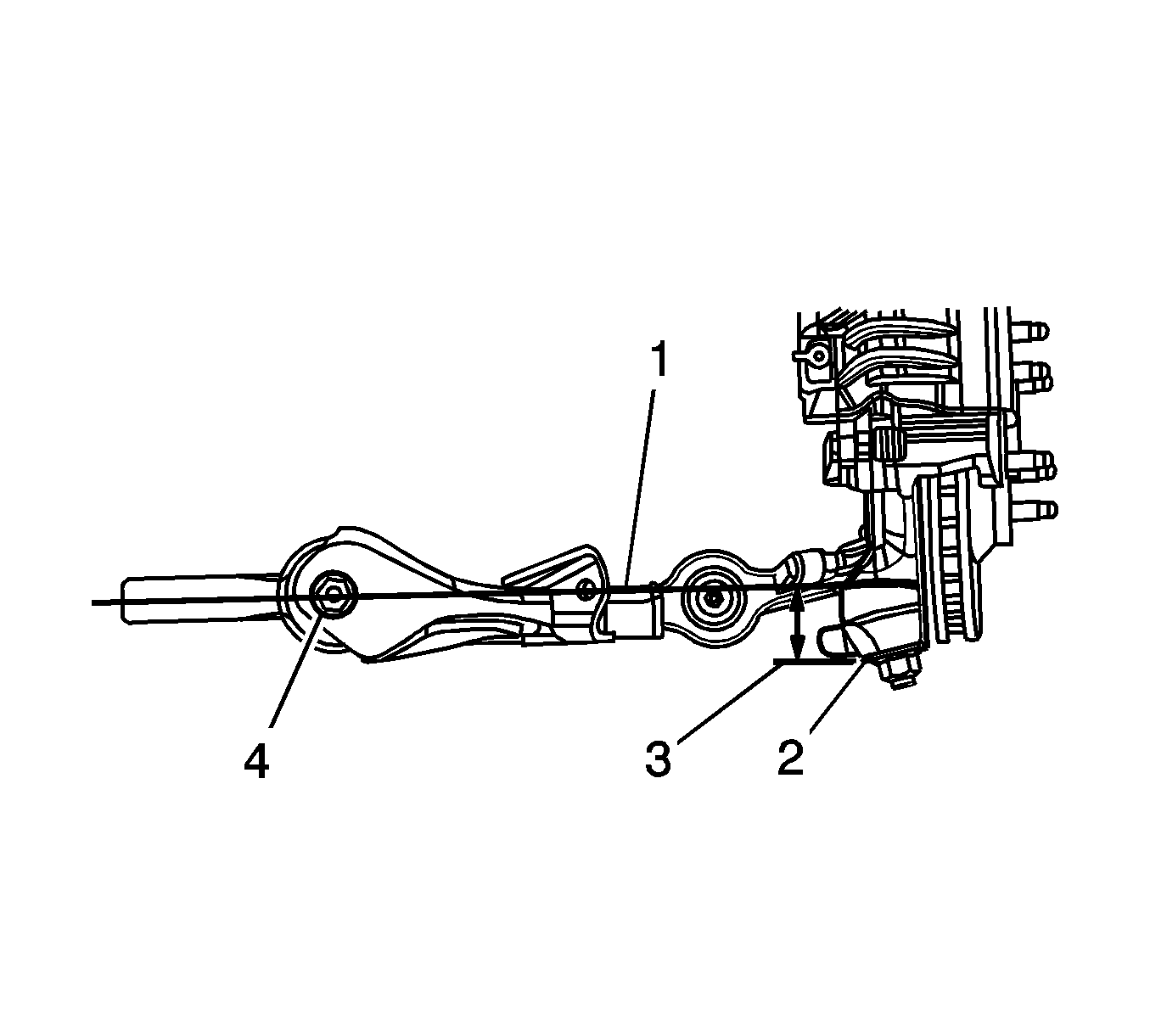Trim Height Measurements
Trim height is a predetermined measurement relating to vehicle ride height. Incorrect trim heights can cause bottoming out over bumps, damage to suspension components, and symptoms similar to wheel alignment problems. Inspect the trim heights
when diagnosing suspension concerns and before inspecting the wheel alignment.
Perform the following before to measuring the vehicles trim height:
| • | Check the fuel level. Add additional weight if necessary to simulate a full tank. (One U.S. gallon of gasoline weights approximately 6.5 lbs. One liter of gasoline weights approximately 0.70 kg.) |
| • | Make sure that the passenger and rear comportments are empty, except for the spare tire. |
| • | Make sure that the vehicle is on flat and level surface, such as an alignment rack. |
| • | For vehicles equipped with automatic level control, ensure that the system is functioning properly. If weight has been added or removed from the vehicle, the ignition key must be turned on for 2 minutes so that the level control system can
readjust for the change in the vehicle load. |
| • | Check that all the vehicles doors, hoods, and deck lid are securely closed. |
| • | Check for installed after market accessories or modifications that could affect height measurement: |
| • | Larger or smaller than production wheels and tires |
| • | Lifting or lowering kits |
| • | Wheel opening flares or ground affects. |
Measuring the Z Height
Important: The left and right Z height difference should be no more than 24 mm/.95 in.
- Use the following procedure to measure the Z Height;
| 1.1. | Lift the front bumper of the vehicle up to about 38 mm (1.5 in). |
| 1.2. | Gently remove your hands and let the vehicle settle. |
| 1.3. | Repeat this jouncing operation 2 more times for a total of 3 times. |

| 1.4. | Measure and record the distance from the centerline (1) of the lower control arm bushing bolt (4) down to the machined edge of the steering knuckle (2) in order to obtain the Z height specifications. |
| 1.5. | Repeat for the other side of the vehicle. |
| 1.6. | Push the bumper of the vehicle down about 38 mm (1.5 in). |
| 1.7. | Gently remove your hands and let the vehicle settle. |
| 1.8. | Repeat the jouncing operation 2 more times for total of 3 times. |
| 1.9. | Re-measure the Z height as in steps 1.4 and 1.5. |
| 1.10. | The true Z height is the average of the measurements taken in steps 1.4 and 1.9. Compare this value to the published Z height specifications. Refer to
Trim Height Specifications
. |
- If any of these measurements are out of specifications, inspect for the following conditions:
| • | Worn or damaged suspension components |
Measuring the D Height
Important: Cross vehicle D height should be within 12 mm (0.47 in) for vehicles equipped with coil springs and (0.31 in) for vehicles equipped with air suspension.
Important: On vehicles equipped with rear air suspension, verify that the ignition key is in the off position before jouncing the vehicle.
- Lift the rear bumper of the vehicle up about 38 mm (1.5 in).
- Gently remove your hands and let the vehicle settle.
- Repeat this jouncing operation 2 more times for a total of 3 times.

Important: A D-height gage block can be used to determine the D--height position. Crate a D-height gage block using metal stock cut to 20 x 30 mm x the published D-height specifications.
Refer to
Trim Height Specifications
. Use the block as a measuring device only.
- Measure and record the D height by measuring the vertical distance (2) between the top surface of the axle and the side of the hole center on the jounce bumper reinforcement bracket.
- Repeat for the other side of the vehicle.
- Lift the rear bumper of the vehicle up about 38 mm (1.5 in).
- Gently remove your hands and let the vehicle settle.
- Repeat this jouncing operation 2 more times for a total of 3 times.
- Re-measure the D height as in step 4.
- The true D height is the average of the measurements from step 4 and step 9. Compare this value to the published D height specifications. Refer to
Trim Height Specifications
.
- If any of these measurements are out of specifications, inspect for the following conditions. For vehicles equipped with coil springs:
| • | Worn or damaged suspension components |
- For vehicles equipped with air suspension, refer to
Air Suspension Description and Operation
or
Trim Height Inspection
.


